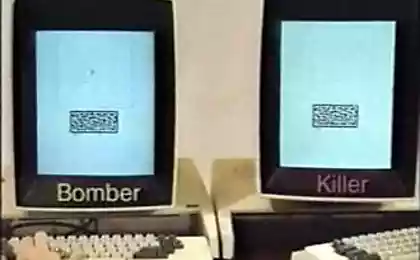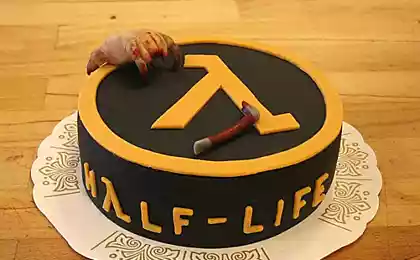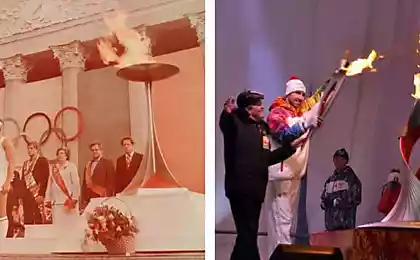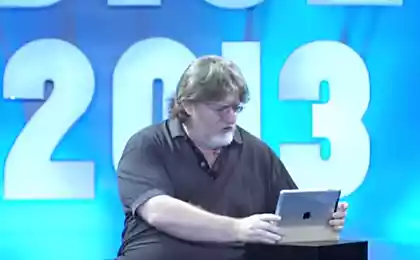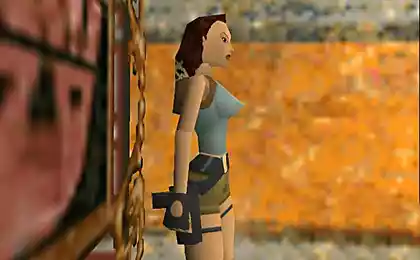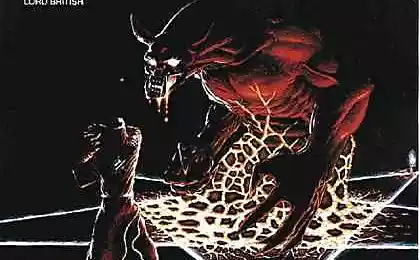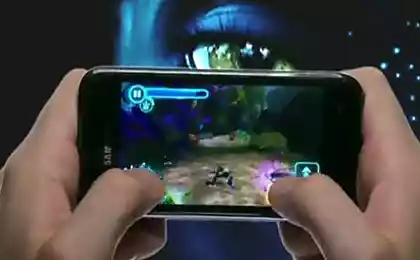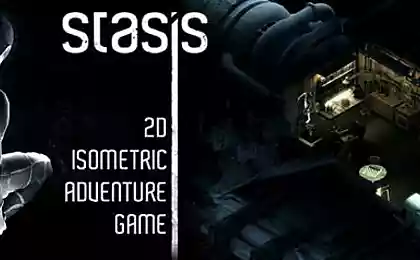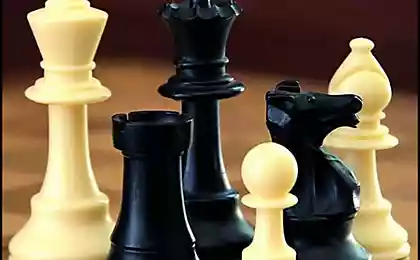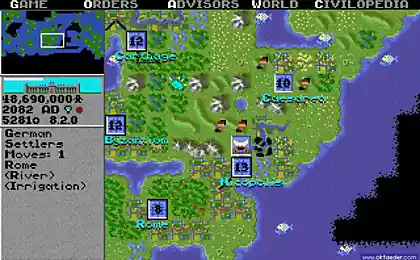421
History of Half-Life 2
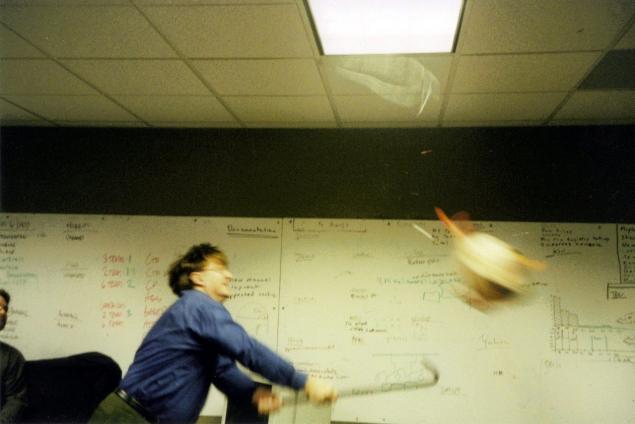
On Monday, November 9, 1998, at about four p.m. in an ordinary office complex somewhere near Seattle, a man in a blue shirt picks up a mount. He holds her with both hands and stands in position to attack. Then there's a wet punch on the head crab. Filled with game money from Monopoly and wind-up toys with South Park characters, the piñata falls to the floor. To the jubilation of the crowd, another man finishes the crab. This is Gabe Newell and Mike Harrington, the founders of Valve Software, celebrating the release of their first Half-Life game for replication.
On Thursday, October 14, 2004, at 12:15 p.m. after long pleas from the crowd to destroy the target early, the ceremony is repeated. This time around, Gabe in red polo defends himself against a scanner attack from Half-Life 2. Control strokes for the pieces of piñata hanging on the rope are performed by the game's screenwriter Mark Laidlaw. The second game of the series came out on gold.
Between these dates is almost six years. About delaying any development deadlines, Valve likes to joke. The official wiki has a Valve Time page with a funny table full of comical inconsistencies. Any promise, from minutes to months, can easily turn into hours and years.
Half-Life 2: has been in development for almost 6 years. By the standards of the gaming industry, this is an era. In six years, game consoles will have time to update once. How was it possible to drag everything out and break the release date again?
1999
The original Half-Life was released in late 1998 and has been named Game of the Year more than 50 times. Half-Life sold millions. It changed the perception of the genre of first-person shooters: it was no longer interactive rooms with enemies, but at least some whole story. Half-Life gave its plot without cut scenes, completely from the position of the silent protagonist. Screen-stitched downloading maps today is ridiculous, but then it struck the imagination.
At Valve there was no doubt: there should be a sequel. Yes, it would be possible to quickly concoct some sequel on about the same technologies with the same techniques. Opposing Force (1999) and Blue Shift (2001) were developed by Gearbox Software. These two games speak exactly the same language as Half-Life. Except that the player is not called Gordon Freeman, but Adrian Shepherd or Barney Calhoun.
No, the new game should once again change the genre. So at first, the development team was told that they had a virtually unlimited budget and no time pressure. In the iron triangle of project management, the two tops were completely let go. All that remained was quality.
The success of the first game was to be repeated under the guidance of only one of the co-founders. On January 15, 2000, Harrington completed his final lines of code in the studio and left Valve. He has long wanted to sail with his wife on his own yacht and decided to make his dream come true. For Gabe Newell, Harrington was a soul mate. Before Valve, the two worked at Microsoft for many years and understood each other.
Development of the second Half-Life began in June 1999. In the summer Valve was brainstorming, offering any ideas that can move the genre forward. Perhaps the game should have speech recognition so that the player can communicate with the characters? What if there's a team-mate system in the game where some security guard Barney keeps following Gordon?
Gradually, the principles of building a future masterpiece emerged. In the first game, users liked a lot, but especially noted the storyline with the characters. As Newell recalls, the idea sounded silly at the time, but Valve decided to expand the range of emotions in games. There were characters that the player loved or hated, that would not leave him indifferent.
Emotions.
The characters in the first game elicited a good response: for example, the players were really sympathetic when the same guard at all levels Barney died. The graphics and animation of the time were primitive. For the second part, something new was required, except for opening and closing mouths in the rhythm of speech. Emotions had to be conveyed not only by the play of the voice actors, but also by the facial expressions of the characters.
In those years, creating a computer model of a realistic person was a problem even for cinema. For video games, the issue was even more acute. If an animator can catch an error before the release and render something again, then video game designers need to consider everything in advance.
Ken Birdwell, who worked on new Valve technologies, worked for some time with Ken Perlin, a professor in the Faculty of Computer Science at New York University. Perlin was one of the leading experts in the field of computer graphics: for the film “Tron” he developed the Perlin noise algorithm. Valve was interested in Perlin's developments in the field of facial animation.
The face should not show impossible movements. This is one of the first experiments of facial animation in 1974. You can't bend your face like this bunch of triangles.
Birdwell came across the work of psychologist Paul Ekman, a specialist in facial expressions for law enforcement and lawyers. Later, Ekman was a consultant for the TV series "Lie Me."
In the seventies, Ekman looked for a way to diagnose mental illness by facial expressions. And for that, he needed a map of people's emotional states. The researcher developed a set of about 40 different "facial action units" - simple emotions of the level of raised eyebrows collected at the lip point, wide-open mouth and so on. In addition to the clinical descriptions of what each emotion looks like, he wrote the rules for how they fit together.
From the upper left corner clockwise: rage, fear, disgust, sadness, happiness, surprise.
As it turned out, if you put all these rules of muscles into code and pull on the head of the character, the face in the game never makes impossible movements.

Emotions by Alix Vance in the demo for E3 2002.
To create scenes with facial expressions, movements of skeletal animation and synchronization of lip movement, Valve created the Faceposer tool. Today, it is the standard SDK tool of the Steam engine.
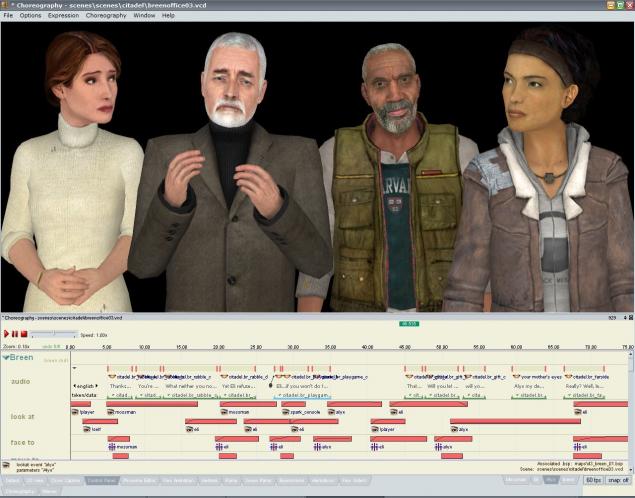
physics
Not only the characters, but the world of Half-Life 2 must be alive. The times when interactivity was limited to pressing vending machine buttons and flushing toilets are in the past. At the idea gathering stage, Valve decided to use AI, the physics engine and the map design itself to create interactivity. In the sequel, the player wanted to be given the freedom to interact with objects. Scenarios of the level of "raise the radiator and how to protect them from enemies" quickly appeared.
Before Valve, there were no attempts to add physical interaction to the game. Bold experiments were, albeit not always successful. For example, "physics" was in the 1998 game Trespasser. Critics scolded the pointlessly complex physics engine and bugs.
Valve wanted to add “physics” beyond the scripted scenes, interactions that would claim the human behind the keyboard and mouse to the game world that would be used in gameplay. They wanted to turn the ordinary level into a playground, where any task has several solutions with manipulating objects.
No other third-party product was suitable for what Valve had in mind. By the end of the summer of 1999, the need to write your own game engine did not raise questions. And even then it was clear that the development of the game with the new engine will take at least three years. It was necessary to write new network code (with “physics” running in multiplayer), new forms of AI, improve sound processing, raise the level of graphics.
In the experimental Source engine developed from GoldSrc, programmers added new features, a physical interaction code licensed from a small German firm, Ipion Virtual Physics (later bought by Havok), and improved the graphics component.
Plot search
The first and second games are very different. It is not about length, but the surroundings and the events described. The first part is not interested in what is happening outside the Black Mesa research complex. In the end, the player finds himself in the bizarre outlying world of Xen, but most of the game is still the same corridors as in the predecessors of the mid-nineties.
Half-Life 2 wanted to create a variety of gaming environments. This is not just some premises and laboratories, but something global. Initially, the writers wanted to teleport Gordon from planet to planet, where he would exterminate the hordes of Xen aliens from the first game. The idea has been discarded - there needs to be consistency between levels.
The action moves to Earth captured by the Alliance, a paramilitary totalitarian alien empire. How much time has elapsed between the actions of the first and second parts, the player is not informed. More than 50,000 photographs were taken in the United States and Europe to prepare for realistic landscapes and textures.
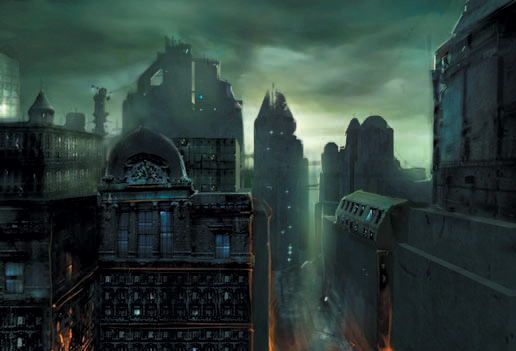
In the final game, the starting and ending point of Gordon’s journey is the city. During the development process, it was heavily revised. Some options are located on the East Coast of the United States. The alliance has taken over the city, but prefers to recycle its structures and materials rather than create something from scratch. Huge skyscrapers, a dark palette of colors, Gothic architecture, humidity of precipitation and fog, metal, brick and glass - all this disappeared.
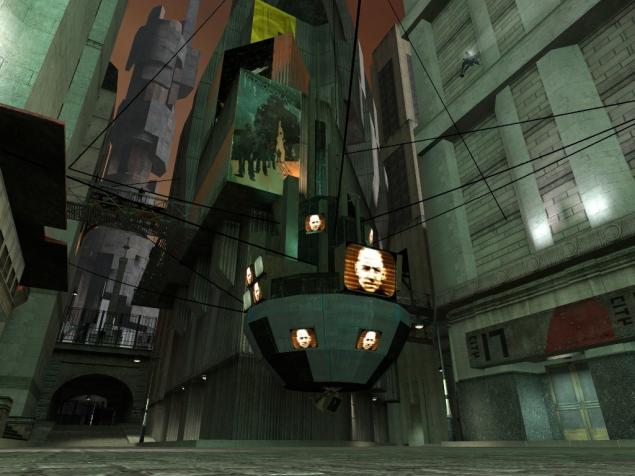
Bulgarian-born Viktor Antonov suggested moving the scene to the city blocks of the eastern European city and its surroundings. The idea went viral. Gradually, City-17 moved to another point of the globe and found its bright colors. The dystopia of Orwell’s novel remains: scanners fly everywhere, and propaganda sounds from the screens.
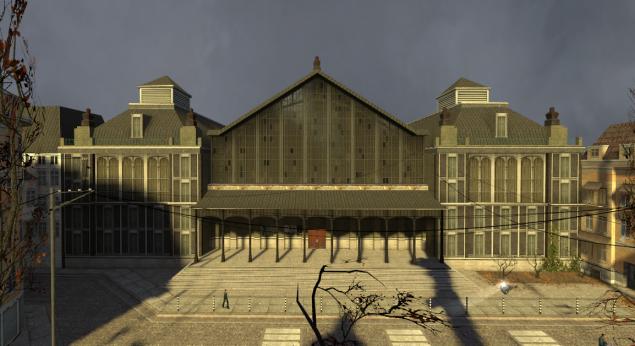
City 17 Station.
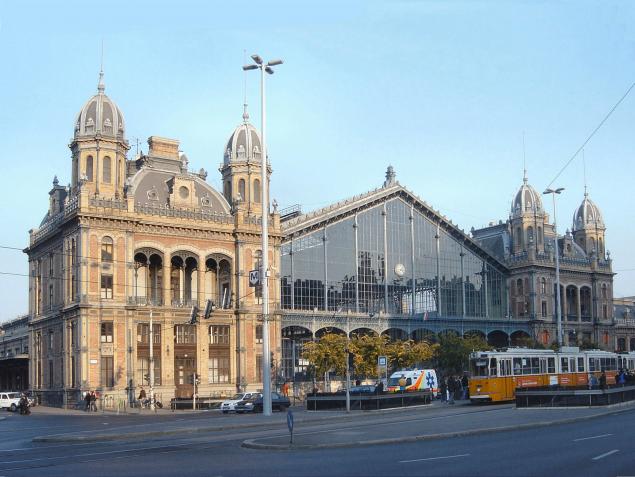
Newgati Station, Budapest.
The game was big, even huge. Like the first, it began with a long train journey, during which Gordon is introduced to what is happening. The player watches the dangers of the Wastelands from the windows of the car. Upon arriving at the walled City-17, Gordon wanders for a long time and studies the surroundings, stumbles upon the laboratory of Dr. Isaac Kleiner. The teleport is in trouble, and Freeman leaves town in a hurry.
After traveling through the Wastelands, Gordon reaches Ravenholm. This is followed by a dump, Eli Maxwell with his robo-dog, who gives Gordon a gravity gun. Freeman goes to the caves of ant lions, boards the train to prison and arrives at the air exchange station. Next are the Arctic locations, the Borealis ship, the Kraken base, the weather control station, the flight to City-17 by plane, street battles and the final defeat of the Citadel and the Consul.

A map of one of the scenarios.
Entire fragments and characters will either go under the knife or appear later in episodes. You can combine not only two locations, but also make two people one. Eli Vance, Alix’s father and one of the leaders of the Resistance, is Captain Vance and Eli Maxwell. Eli Maxwell lives in a scrap metal dump. That's probably why they used a nameless homeless man for Eli's face.

References of some characters. Valve does not use professional models, and hunt for usually looking people with memorable details in appearance. For example, Isaac Kleiner is an accountant from a company based in the same building as Valve.
Television distribution
However, the above is a long way to the final game. By 2000, the plot was already formed, but mainly on paper: in text descriptions and concept art. Working in a situation where the engine is not really finished is difficult.
By the summer of 2001, the game had just launched a physical engine. Gradually, the engine grew to such an extent that it was possible to sketch cards. Encouraged by the success of the software part, a small group of level designers made a test level "Get your free TVs". It was just a simple experiment and there were no plans to add it to the game.
Rebel citizens and metrocops stage street fights. In the process, rioters throw in armored vehicles bottles with incendiary mixture, explosions demonstrate the success of the physical engine. The looters, taking advantage of the panic of the situation, begin to rob shops and shout a funny line that has become the name of the level: "Get your free TVs!"
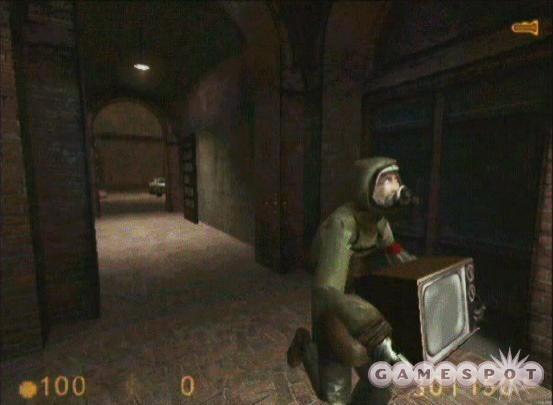
The only official level screenshot.
In the same 2001, Newell completely left Half-Life 2 and headlong into the development of Steam - the same Steam that will be released in September 2003 and will annoy users with frequent updates and instability. At the time, Valve did not have an online content distribution system. With each new patch Counter Strike for a few days fell off the part of users who did not update the client.
After seeing a trial map of consumer electronics theft, Gabe asked the developers to prototype some internal gameplay — a feasibility study — and a demonstration for the rest of the world at the 2002 Electronic Entertainment Expo. At the end of 2001, the team begins to prepare fragments of what should be ready by May next year.
E3 2002
Although Newell is usually directly involved in the development, he retired from the creation of the game and worked on Steam. Therefore, he could judge the readiness of the trailer for E3 2002 as an impartial arbiter.
In March 2002, at the Game Developers Conference, Gabe first told the world about Steam. In the game world there was a real Robin Hood, who wanted to end the dominance of publishers. According to Newell, the majority of developers get around $7 per game sold. The Steam-like online distribution system, Gabe promised, would reduce the cost of a middleman and bring developer revenue to $30 per copy. Valve has talked about plans to continue making physical copies of games, but also to start releasing them on Steam.
The original video has never been released. Thanks to the leaks, there are a few minutes of that trailer.
Upon arrival from GDC, Newell was shown a demo. The main piece is a nearly 20-minute demonstration of Dr. Kleiner's lab with Isaac and Alix himself. The long dialogue showed the emotions that Valve had been working on for so long. The demo showed the future world and how the physical component would work.
Children work in factories. In the final game there are no children - the Alliance suppresses reproduction with a special field.
Newell's verdict was that while a lot of work had been done, something even more fascinating was needed. The characters turned out to be interesting, but the dialogue dragged on and quickly got bored. Physics was present, but one could not understand what was so revolutionary about it. Half-Life 2 did not appear at E3 2002.
Demonstration of the oppression of citizens by the Alliance in City 17. The citadel is markedly different from the final version.
The mood in the group subsided. For some time, the developers were in a depressed state, but still recovered. Next year, a new demonstration was planned. The situation was somewhat reminiscent of the fall of 1997, when the development of Half-Life came to a standstill. At Valve, everything started from scratch, but it was worth it.
By September 2002, a new prototype of the future game had taken shape. Level and character design tools have improved significantly, helping the process. There was a ride on a buggy on the coast of City-17, a meeting with head crabs, an attack by a strider in the city. Part of the gameplay was borrowed from the original, and the fragment in Kleiner’s laboratory was cut to minutes. A new set of scenes showed Newell.
Only now Gabe was satisfied with the quality of the idea. Full-scale development began with the help of tips on the Weilw method of Cabal and full process planning. There was no announcement to start development for the outside world. In October, Newell gathered staff and set a timeline: a demonstration at E3 2003 and an exit by the end of 2003.
Cabal
On its first game, Valve worked out a scheme with "conspirators' councils," named for the "cabal" council under Charles II. Cabal councils come up with and sketch on paper the design of future levels and the plot. Such groups may be convened to resolve any other issues related to the game. The same scheme was used for Half-Life 2, except that now the studio has three times more employees.
The incompleteness of the engine added problems. If Half-Life licensed the finished engine and added to it fashionable beauties, for the second part critical for gameplay parts changed during the creation of the game. For example, at the beginning of development, the transport did not work. How wide can a cliff be if the behavior of a buggy is unclear? They had to make assumptions, and they were often incorrect.
Three independent cabal councils were involved in the development of Half-Life 2. Each of the three consists of 4-6 people, about half are designers, half are programmers. Everyone on the board is a consumer of the services of the others. Level designers are consumers of programmers’ work, programmers rework code, so they are clients of level designers. Physically, each of the Cabal groups was placed in the same room, so that they did not disperse to solve third-rate problems.
Half-Life’s cabal board included an artist and screenwriter. Half-Life 2’s three-cabal architecture required artists and screenwriters to be shared. In addition to the three tips, three teams appeared: artists, storytellers and sound engineers.
The first team dealt with the appearance of monsters, environments and characters in the early stages of development and art decorations when finalized levels began to appear. Level design was completely separate from art design. In other words, cabal councils produced rooms with orange walls. Artists arranged textures and objects.
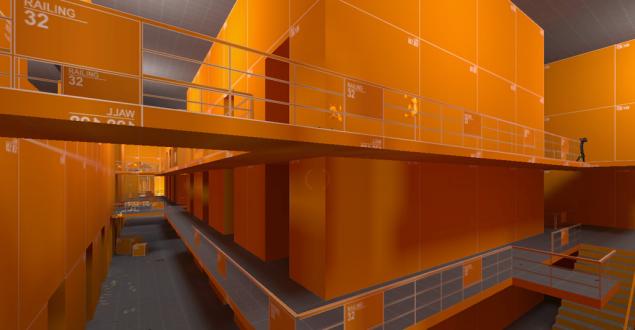
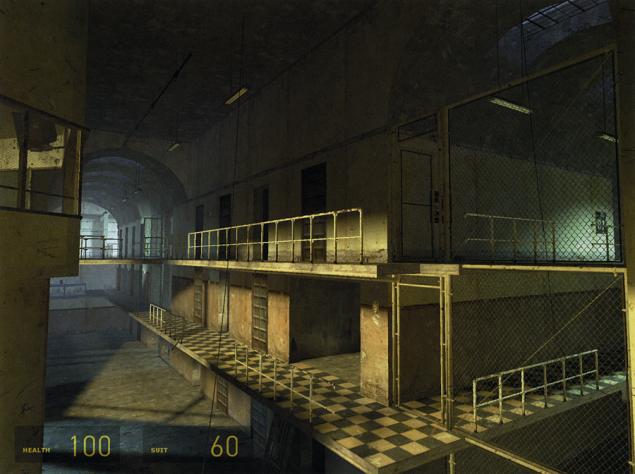
One of the levels of the Nova Prospect prison is at the prototype stage and in its final form after taking into account the test results.
Orange cards helped to avoid criticism of the decoration in the stage when it was necessary to criticize the level design. Another plus: the artists saved their energy and did not start working on the design before the end of the playtests. They had more freedom to experiment with visual styles.
To pass, the artists were given a successfully tested prototype and style guides. The latter were non-playable levels created solely to demonstrate visual design. The geometry of the prototype gameplay was implemented in the final models. At the level appeared lighting, auxiliary materials and effects. Additional ready-made pleistes helped to avoid situations where playtesters refused to walk on the flimsy bridge, which in the orange prototype was a stable structure.
Instead of scripted scenes, the Cabal group added text stubs. For example, instead of a future scene with a graceful overcoming of a cliff, the text could be: “One day you can jump a cliff on a jeep here.” The plotters helped with the implementation of some of these stubs: animations and interactions appeared on the levels. In complex scenes with an abundance of plot development (Kleiner’s laboratory, Eastern Black Mesa, Brin’s office), the plot team became the fourth “cabal” advice.
How do you relate the limitations of the Cabal groups that make gameplay design to the story? In the prototype levels, the gameplay changed quickly, and the plot line had to be preserved. To do this, the “cabal” councils were given two reference points, for example, exit from City 17 and the end of the journey in the Eastern Black Mass. The plot elements between these points were deliberately left vague. The council worked on the level design, guided only by the most important constraints. The story team then met with the council and laid out important elements. For example, it could be a reminder of the goal or learning new game mechanics.
Each of the “cabal” councils had its own strengths and weaknesses caused by its composition. Someone better able to create puzzles with a physical engine, someone well placed enemies for combat. The councils shared good ideas. For example, the Ravenholmites inspired the council working on the Citadel to an enhanced version of the gravel gun.
The change in some elements threatened to disrupt the order of responsibility of other councils. To prevent this from happening, a Cabal of Arms was formed, composed of representatives of three councils. The skill level in the shooter genre on the weapons board ranged from high to low to accommodate all groups of players.
Yet even this flexible work scenario was not always enough. Ravenholm was originally before the "Eastern Black Mass", but he was moved to please the forces of the game mechanics of the gravip gun.
At the end of February, Newell, in a confident tone, somehow got the release date accurate to the day: September 30, 2003. The team quickly appreciated the difficulty of meeting this deadline and began preparing for emergency work.
E3 2003
How to play the game so that fans fall in love with it? The original plan included a 30-minute demo in the lab. In it, Alix shows off new technologies and then suddenly the lab is attacked by the Alliance forces. Alix and Gordon are forced to flee. But in the weeks before E3, it was obvious that everything that would be shown at the show should be present in the final game.
Demonstration of the game at E3 2003. An interesting comment from someone in the audience after the demonstration of the physical engine: "Will it work on my 486th?"
What the fans saw looked like a few technical demos and a bit of gameplay. There is no doubt that the successor to the first game will not surpass its success. The game won an exhibition award. However, skeptics have questioned whether Valve will have time to finish work by the fall. Their logic is clear: why didn’t anyone at the exhibition play a new game when it was about to catch up? Competitors said that in the game such “physics” is unlikely: to create levels for it is a real nightmare.
Term failure
E3 ended, and Valve continued to create a future masterpiece. Even then, the feeling of delay was in the air. He will be noticed much later, when the company began to look for mistakes in past actions. For example, as Newell recalls, it would be time to prepare the localization of dialogues in other languages, but they are still not finished.
In order to get to the end of the day, a lot of things were removed from the game. The hydraulic bike never worked, so the levels with it wanted to be removed altogether. The plot scenes took a lot of resources, so they also wanted to cut. When asked to approve the changes, Gabe said the team did not need to compromise. Finally, it became clear that the game will not be released on September 30.
However, Valve has been silent about the timing shifts. On July 29, Vivendi Universal Game announced that Half-Life 2 would not be released on September 30, but around the 2003 holidays. The Internet reacted violently.
Today, Newell both in build and manner of behavior resembles Santa Claus. This is a kind grandfather with a white beard who answers children's letters. Unless you need to write not to Veliky Ustyug, but to an email address. And Gabe does respond sometimes. Most often these are quick one-line answers, although there are detailed comments. That was the case when Valve was a small studio, and it remains so to this day as the company grew to the size of a giant.
But in the summer of 2003, Newell almost stopped contacting the community. After spreading the word about the timing shift, one of the fans emailed Gabe and asked if the rumors were true. "First time I've heard," Newell replied. Fans considered his response to confirm the original deadline.

An early sketch of movements at City 17 locations. In the final game, these fragments were greatly simplified.
On August 24, Valve said that the release date has not changed, and the game will be released worldwide on September 30. A similar statement was made on August 27. In September, fans were waiting for confirmation of the release on “gold”. On September 18, a fan visited Valve’s office and received the same response: The game will be released on September 30.
Only on September 23, Valve acknowledged the state of affairs. A week before the intended release, the company said the release date was shifting. A new possible date is the winter holidays, but no specific date was given. Over the next few days, Newell declined to comment on the state of the game.
The fans were amazed. They immediately recalled the Valve project Team Fortress 2. The first demo was shown at E3 1999, but nothing more was heard about the game. Is Half-Life 2 going to go nowhere?
Newell later explained what really happened. By July, it was clear that the Half-Life sequel would not be released by the due date. But the delay was not announced because there was simply no new date. Gabe fell into a stupor and remained silent until the very last moment.
On September 30, the manufacturer of graphics cards ATI (now a division of AMD) has scheduled a major party on the occasion of the release of Half-Life 2. ATI reportedly paid $6 million for a support campaign and other marketing joys. On Sept. 30, ATI filmed Alcatraz — that island, the whole thing. Newell was supposed to be at the party as part of that commitment.
On September 30, a red polo man boarded a ferry from Pier 41 in San Francisco. At 20:30, Newell stepped onto a makeshift stage in prison. This was followed by a speech in favor of ATI and the tiny benchmark of the Source engine. Half-Life 2 has not been announced.
The demo shows the work of shaders, High-Dynamic Range and high-quality reflections. On the roof of one of the city levels d1_trainstation_04 put an ant lion guard, which in the city-17 to do absolutely nothing. The demonstration was done quickly and rudely.
Many surprised journalists tried to ask Gabe about the new release date, but he seemed very eager to return to his native Seattle. “I hate release dates. No matter how hard we try, always a puncture, he said in response to one of the questions, went out and caught the first ferry to the mainland at 21:30.
There are no HDR effects in Half-Life 2. They appeared in the Half-Life 2: Lost Coast demo, which came out only a year after the original HL2.
Hacking
The fan rage and the ridiculous display are nothing compared to what has fallen on Valve in the future.
Something went wrong in September. In unexpected periods of time, Gabe's computer blinked an LED using a hard drive. The problem remained after formatting and reinstalling the system. Internal audit found nothing.
This was followed by events that began to raise real concerns. A copy of an internal letter between Gabe and one of Valve's programmers appeared online. Nothing special was said there, just some working question on Counter Strike.
After more detailed research, Newell found strange programs on hidden volumes on his car, and unexpected bursts of activity on the Valve corporate network. At least 13 other vehicles were infected. Newell rushed through the offices and demanded to disconnect computers from the Internet, tore the cables out of the outlets and turned off the equipment.
On October 2, files stolen from Valve’s internal network began appearing online. There were: source code for the Source engine, Half-Life 2, Counter Strike and several other games, including abandoned projects. On October 7, a launch version of the game appeared online. This is what we saw at E3 2003. Half-Life 2 is a long way from being released.
Users began compiling indecent images from the game's resources, such as oral sex between Kleiner and Alix. But it was particularly painful for Valve’s reputation and ego that Osama Bin Leaker commented that E3 was a fake. Newell hid the real state of the game for several months, and now its “rawness” could be assessed with his own eyes by anyone. Indeed, what was shown at E3 was partly a Potemkin village.
The hydra scene is completely scripted. The monster is cut from the final version: it’s hard to fight.
On the other side of the world, in the tiny (slightly more than two thousand people) town of Schönau in Germany lived with his father 22-year-old Axel Jembe, a hacker who was destined to play the main role in this play. The world of hacking caught the gamer by accident - once he downloaded and installed the sdbot virus program, disguised as the Warcraft III key generator. Instead of cleaning up the system and forgetting about the Trojan, Jembe reverse engineered the product and learned how it worked.
The program was controlled by an IRC server, and Axel tracked down its operator. Again, instead of handing it over to law enforcement, Jembe began asking questions about the malware. Jembe created his own malware, stealing CD keys to gain access to games the attacker was eager to play. Over time, his Agobot became one of the most dangerous Trojans of the era.
Jembe’s criminal activity was fueled not by his desire to make a profit or make a loss, but only by his passion for video games. My favorite was Half-Life. Like all her fans, in 2002, Axel suffered from the lack of any hint of a sequel, which prompted him to think about hacking Valve’s corporate network.
According to the hacker, everything happened by accident – in the process of scanning the network, Jembe discovered that behind the security of the outside lies a weakness from the inside: their domain name servers were allowed anonymous AXFR requests, thanks to which all subdomains of the name ValveSoftware.com were obtained.
In the logs of port scans, Axel found an unfiltered firewall server outside the Valve network, which belonged to Tangis, a company engaged in wearable computer devices. It had a public-to-record root of the site into which the attacker had uploaded ASP scripts. Thus, Jembe gained access to the inside of the corporate network on the first attempt. Axel unloaded a dump of hashed passwords of users of the system, and thanks to the technical base of the Swiss Higher Technical School of Zurich, passwords were quickly restored on it.
Looking around the environment, Jembe came across documents, design requirements, notes about the creation of the game - exactly what he came for. On the other hand, even weeks later, no one suspected the fact of the Valve penetration, so the hacker dared. On one of the machines, he discovered the source code of a game he was eager to play. Thanks to the performance of the Perforce version control system, unloading did not cause much trouble.

The main menu Half-Life 2 sample 2003.
The game, however, never ran on Axel's computer. He turned off the shaders, which made her more boring. The burglar recalled that the code had several forks, which Jembe began to check in a row.
Later, Axel will say that the code was not posted to the public, but only gave one friend to brag for the sake of bragging, weakly thinking about the consequences. A friend promised not to allow leaks, but did not keep his word. It was impossible to stop spreading after getting into file-sharing networks.
Gabe contacted the FBI, but decided to take advantage of the community's goodwill. On the forum Half-Life 2 (now ValveTime.net), the head of Valve posted a post “I need community help” where he asked players for information about the hacker. The players reacted mixedly. Some of them believed that all this is a beautiful PR action, the purpose of which is to demonstrate the demo version of the game. Someone tried to help but failed.
Comparison of one of the leaked maps with its final version. Here you can see what the draft of the bonded council looks like: a lot of empty textures and text instead of events.
On February 15, 2004, the hacker contacted Valve and explained the unintended nature of his actions. Newell suppressed the desire to take the mount and buy a plane ticket. Instead, he began to extort details. The young man showed a typical burglar mentality: if I don’t get anything for it, then my victim deserves to be hacked.
At the same time, any hacker has a pride in the penetration that they wanted to use. It was enough only to admit the commission of illegal actions recorded on film. The hacker was offered a job at Valve as a security consultant. The phone interview was conducted by Alfred Reynolds, developer of Counter Strike and Steam.
Forty minutes, the hacker was asked in detail about the details of the hack, penetration into the network, skills and experience. Djembe, having lost all sense of guilt due to the presence of his idols, told everything. Axel received an invitation for a second "interview," this time on American soil, in Seattle, at Valve's office. But the hacker was detained not in the US, but in Germany. American attention to the citizen of the country aroused suspicion of the German authorities, and they took matters into their own hands.
On the morning of May 7, 2004, Axel was woken in his own bed by armed men, charged with infiltrating the network of an American corporation and causing more than $250 million in damages. The hacker was arrested. The trial against Jembe took place in Germany in November 2006, 2.5 years after the leak. The attacker received 2 years of probation. He spent only two weeks in prison.
Alpha version
Development continued, although hacking and timing disrupted the productive atmosphere. Inside Valve there were unpleasant processes: the mood of the developers fell, and the release of the game was difficult to imagine in the foreseeable future. At the same time, each month the development cost a million dollars. One of the young designers once asked Newell, “Would this kill the company?”
Gradually, however, morale improved. If the leaked game of September 2003 is unlikely to play, then in March 2004 all 14 chapters of Half-Life 2 can be played from beginning to end. The active phase of the playtests has begun. The whole Valve was playing, even Gabe's father came to evaluate and give his feedback.
The first sketch of the plot is very different from the result. The game does not start on a long train ride or on the Borealis icebreaker, but on a quick introduction that takes minutes. Using a first-person jet ski looked like a quick run. Its levels were not removed, but replaced with a more suitable rusty air boat for the Resistance.
Although the scenes shown at E3 2004 rarely differ from the final scenes, the spring of 2004 was a long way off. It was necessary to carefully balance the interaction density at each point so that the game was not too boring or intense.
The first passes of the playtests revealed significant variations in pace. Often, chapter transitions made no sense at all, as one bonded council could not predict what would happen to another. From chapter to chapter, the level of complexity changed. Some questions, for example, the transitions between chapters, were removed quickly. The most difficult thing was to solve the quality problem throughout the game.
Cabal Cabal, the “Cabal Council of Cabal Councils” was convened. It included a representative of each of the three teams (artists, storytellers, sound) and three “cabal” councils. For one week there were daily meetings for team pleist and criticism. So chapter by chapter the whole game was sorted out. The result was feedback for each team. How to take this information into account was decided by the “cabal” council responsible for the chapter.
Criticism was subject to weak moments: they caused irritation, confusion, were too harsh or even exhausting. Some of these snippets were too difficult to fix, and they died in the last pass of the content removal. Such amputations were not without pain - at that time the teams had been working on the game for a long time.
A second pass followed and further improvements. In general, as the development found, solutions in the end are always better than those in the beginning. For example, levels in the Citadel began to be created six weeks before the alpha version, and there were no ideas for the main game element. But prototypes of all levels in the Citadel appeared in just a day, and the first passage was completed within three weeks. At this point, Valve has formed a good understanding of which mechanics work best, so Freeman ends the final chapter with a gravipushka.
By the end of July, the game was almost ready. The main goals of the coming weeks are to fix the physics system, fix bugs, and make minor level improvements.
Release.
In September 2004, Valve formed the Zero Club. Getting into it is not easy, getting out is elementary. The one who enters the club is welcomed, the one who leaves is booed. The developer ends up in the Club if his bugs are fixed. If there are new ones, they go back to work.
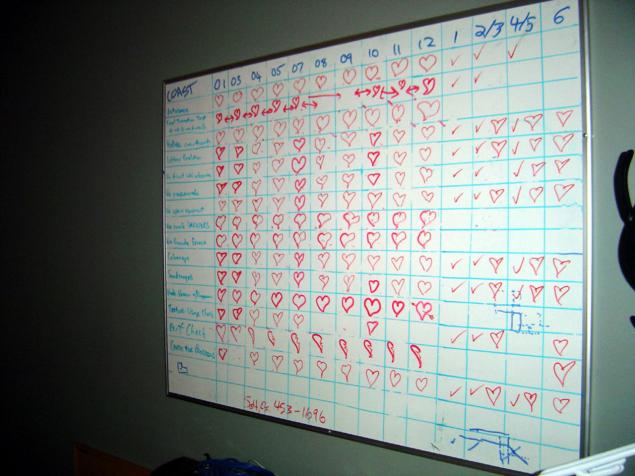
Tracking chapter bugs on the coast
The first candidate for release left the publisher, Vivendi, on September 15, 2004, but returned for revision. On September 30th, a year after the first derailed date, development is still underway. The bugs are running out, and a papier-mache scanner is already hanging in the lobby of Valve. The day of the destruction of this piñata is getting closer.
In the evening of October 13, the final version is ready. After thorough tests, Valve and Vivendi are confident that the bugs are over. There are all programmers in Club Zero. Employees of the company sent letters with a message about the completion of development. At noon on October 14, Newell stands in a threatening position in the foyer, tapping a baton in his left hand on the palm of his right.

Gabe is studying damage from a first strike on a piñata.
There was only a small detail to fear. After five-plus years of forty-million-dollar development, corporate network hacking and source code leaks, deadlines thwarted and the full range of fans' emotions - from joy to disgust - the fact is truly insignificant. Valve is suing its own publisher.
Vivendi and her daughter Sierra publish Sierra On-Line games. Valve’s new development, a Steam client, threatened the Asian market, where Internet cafes were strong due to difficulties with Internet access. Vivendi claimed that the contract with Valve includes Internet cafes.
Seven lawyers from Valve and millions spent on defense, played their case: on November 29, the court disagreed with the statement of Vivendi and sided with Valve. On April 29, 2005, Valve parted ways with Sierra. Soon, on July 18, Electronic Arts announced an agreement to publish physical copies of Valve games.
At the time of its release, Vivendi threatened to delay Half-Life 2 for six months, but this did not happen. On November 16, 2004, Half-Life 2 went on sale and was already working on Steam.
Today, the success of the second game about Gordon Freeman was already forgotten. Critics and gaming publications gave Half-Life 2 top ratings. HL2 has earned 39 Game of the Year awards. In the 2008 edition of the Guinness Book of Records, Half-Life 2 takes the position of the most highly regarded game shooter by the gaming press. On the review aggregator Metacritic among all games Half-Life 2 sits on the first line in the rating with a score of 96%. By 2011, Half-Life had sold over 12 million copies.
Episodes
Gabe estimated the extent of damage to long periods of emergency work. Emotional overload and tight deadlines are a quick path to burnout. Team members can easily lose interest in the process and their productivity drops to zero. At the time of the release of Half-Life 2, Newell said that he would like to work at a quieter pace, individual episodes.
On June 1, 2006, a sequel to the series, Half-Life 2: Episode One, was released. In addition to the development of the storyline and updated graphical capabilities, the gameplay engine makes an even stronger emphasis on the emotions of the characters. The pressure is so strong that it is no longer a game alone. In fact, the player spends all five chapters with Alix Vance. The AI system has changed: it comments on the player’s actions, the items he picks up, gives advice and praises his actions. At the same time, the game manages not to overload the constant pressure of replicas. Alix as a character lives and experiences emotions.
October 10, 2007: Half-Life 2: Episode Two is released. The Half-Life series has always been a corridor shooter, but here the corridor is well expanded. Gordon and Alix travel to major locations. Emphasis on the emotions of the characters brought to the final scene and open for continuation of the ending. But still, it's a game on about the same engine as Half-Life 2. Sometimes episodes are ideas cut from the original game.
The new games in the series stopped coming out. On May 24, 2006, Valve announced plans for a third episode and a tentative release date of Christmas 2007. More than 10 years have passed since the first announcement, but the game never came out. Over the past 10 years, Valve’s current and former employees have touched on the topic of ending their first game several times. But there has never been a concrete promise to release the ending of the series or even the story arc.
Valve continued to create unique game mechanics. Portal was followed in 2007 by Portal 2 in 2011. Both games forced the player to go through a series of mystery rooms using a portal gun. Several fragments of Portal 2 give reference to the Half-Life universe, a connection that is difficult to comprehend.
Portal 2 was Valve’s last single-player game. But even in Portal 2, half of the content is cooperative. You have to play it together. Day of Defeat: Source, Team Fortress 2, Counter Strike: Source and Global Offensive, Dota 2, Left 4 Dead and its sequel – all these games require a network connection. There are some substitutes for training or playing alone, but it is advisable to play with people. Half-Life writer Mark Laidlaw left Valve in 2016. Maybe Valve just doesn't want to release single-player games?
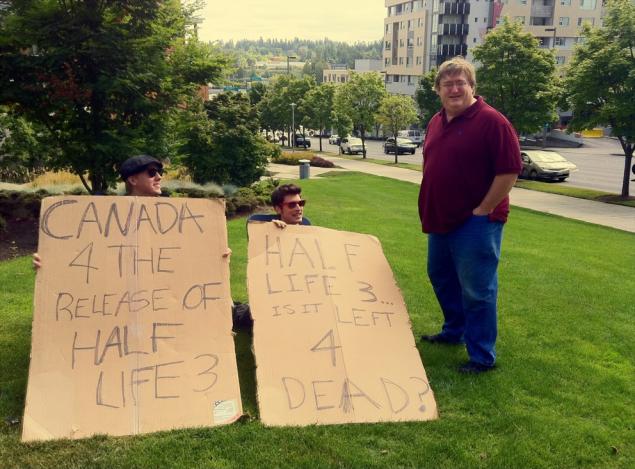
On the other hand, the Steam idea worked. Today it is a distribution system for thousands of games. It’s even standard – the thought of downloading a third-party client of some Origin is disgusting. Constant discounts, a developed community, and, importantly, the ability to create content. Valve encourages players to add hats and other cosmetic items to their multiplayer hits: the company shares some of the proceeds from their sale.
A former Microsoft employee wanted to create a video game, and it turned out to be an environment for launching new applications. His studio from the first years of existence produced tools for editing and creating game modifications. After the announcement of the free licensing terms for Unreal Engine 4 and Unity, the question of royalties from the Source 2 engine did not raise questions - it was clear that Valve would make it free.
In essence, Half-Life was a high-tech demonstration of what a masterpiece could be created on GoldSrc. Half-Life 2 is a masterpiece demo of the Source engine. Half-Life 3 will likely need an even more technologically powerful platform to justify its existence. Nothing but a masterpiece is expected from the game.
It’s not even about the slightly confused storyline or the audience’s many times-high expectations. What new killer feature should Half-Life 3 give the industry? For twelve years, the gamedev has gone far ahead, hundreds of first-person shooters have come out. What can you give single-player shooters that no one has done before? It seems that Valve has no answer to this question yet.
Gamasutra, Gamespot and Half-Life 2: Raising the Bar.
Source: geektimes.ru/post/281282/
The most ferocious marine dinosaurs
The world's first hydroponic solar farm: sea water + sunlight = tomatoes
